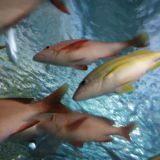Naringenin forms a glycoside with new hesperidin at the 7 carbon position, which is called naringin and has a very bitter taste. When it is ring-opened and hydrogenated to form dihydrochalcone compounds under alkaline conditions, it is a sweetener with a sweetness up to 2,000 times that of sucrose. Hesperetin is abundantly present in citrus peels. It forms a glycoside with rutose at the 7 carbon position and is called hesperidin, and forms a glycoside with β-new hesperidin at the 7 carbon position and is called neohesperidin.Naringenin (naringenin) forms a glycoside with new hesperidin at the 7 carbon position, which is called naringin and has a very bitter taste. When it is ring-opened and hydrogenated to form dihydrochalcone compounds under alkaline conditions, it is a sweetener with a sweetness up to 2,000 times that of sucrose. Hesperetin is abundantly present in citrus peels. It forms a glycoside with rutose at the 7 carbon position and is called hesperidin, and forms a glycoside with β-new hesperidin at the 7 carbon position and is called neohesperidin.aringenin (naringenin) forms a glycoside with new hesperidin at the 7 carbon position, which is called naringin and has a very bitter taste. When it is ring-opened and hydrogenated to form dihydrochalcone compounds under alkaline conditions, it is a sweetener with a sweetness up to 2,000 times that of sucrose. Hesperetin is abundantly present in citrus peels. It forms a glycoside with rutose at the 7 carbon position and is called hesperidin, and forms a glycoside with β-new hesperidin at the 7 carbon position and is called neohesperidin.


















